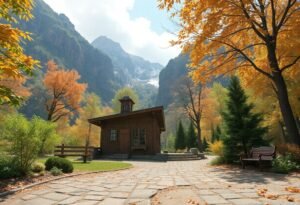What are Slopes Around Your House?
Slopes are inclines in the land that can be natural or artificially created. When discussing slopes around your house, we often refer to a comprehensive garden project that combines aesthetics, functionality, and environmental considerations. Slopes can serve multiple functions, from decorative to protective, and properly shaping them helps better manage rainwater and enrich the environment with plant diversity.
Why Have Slopes in Your Garden?
There’s no doubt that slopes around your house are a fantastic way to add depth and character to your space. They can become a striking focal point in the garden or provide an attractive backdrop for other plants. Additionally, slopes help combat soil erosion, which is crucial in areas with steep inclines. Their presence also contributes to better water retention, making plant care easier during dry spells.
Types of Slopes – Which to Choose?
When planning slopes around your house, it’s essential to consider the type of slope. We distinguish between decorative, functional, and bioengineering slopes. Decorative slopes typically accommodate beautiful flowers and shrubs, whose role is to captivate the eye. Functional slopes can serve as places for herbs or vegetables, making them both beautiful and practical. Bioengineering slopes are gaining popularity due to their ecological function, allowing the development of nesting sites for birds or protection against erosion.
How to Design Slopes Around Your House?
Designing slopes around your house involves several crucial steps. First, a site analysis should be conducted to determine what environmental elements might impact the shape of the slopes. Next, decide which plants best fit the location. When determining the incline, remember not to make it too steep, as this could lead to erosion or safety concerns. Finally, consider whether the slopes should be fenced or integrated with other landscape elements.
Plant Life on Slopes – What to Choose?
Plant life on slopes around your house should be carefully considered. Ideally, choose plants that not only look good but also ensure the stability of the slope. It’s wise to opt for plants with strong root systems, such as lavender, thyme, or certain grass varieties. Additionally, climbing plants can be an exciting option, adding charm to the vertical spaces.
Functional Aspects of Slopes
Slopes can serve numerous functional roles in your garden. Firstly, slopes around your house can act as natural dividers, segmenting different areas of the garden. Secondly, they can also serve as natural benches where you can relax and enjoy the surroundings. Moreover, slopes can constitute walking paths or trails, as well as filter rainwater during heavy downpours, which is particularly important during intense storms.
DIY Slopes Construction
In addition to professional projects, it’s advisable to try your hand at slopes around your house. You can create slopes using natural materials, such as stone or wood. Many individuals opt for small architectural elements or retaining walls that highlight the style of the garden and facilitate its maintenance.
Conclusion
Slopes around your house are not just decorative elements but also practical solutions that can transform any garden into a space rich in nature and functionality. Incorporating slopes not only beautifies the environment but also fosters harmonious coexistence with nature and improves water retention. We encourage you to consider slopes in your garden and include them in your design. Create a space that delights both you and your guests!
Disclaimer
This article is for informational purposes only. Each project should be tailored to individual needs and local conditions.

















